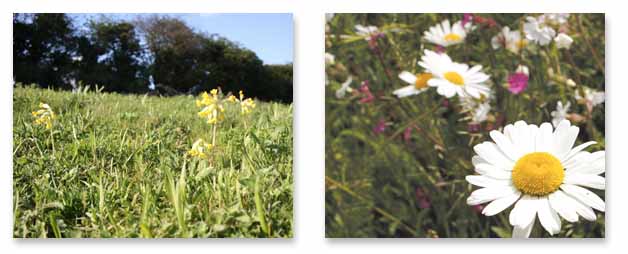We have surely all by now, come across the statistic that wildflower meadows have declined by 97% since the Second World War, and that the majority of the ancient hay meadows which have survived are in desperately poor condition. Something that is not so shouted about, (and should be) is that research has shown that not only are meadows valuable wildlife habitats, but they are really efficient at absorbing and storing carbon.
Research carried out by Miles King Director of Conservation for the Grassland Trust has highlighted that grasslands lock up a fifth of all soil carbon in the UK. This is significantly more than woodland cover. In fact grasslands store on average up to 3 tonnes of carbon per hectare per year, which is more than double the amount that British woodlands store. Although it is worth noting that certain species of tree will be capable of absorbing up to 3.5 tonnes.
How do they do this? Plant litter and other biomass accumulates as organic matter in soils, and is degraded by chemical weathering and biological degradation. Grasslands contribute to soil organic matter, stored mainly in their extensive fibrous root mats. Miles King explained that carbon absorbed into the soil by becoming organic matter is more likely to stay “locked up”, rather than being released when the tree dies or is chopped down.

Even after the meadow has been cut every year it will carry on absorbing carbon dioxide each time there is new growth, creating a rich soil full of carbon. Additionally by not ploughing the land dead roots full of carbon can be allowed to build up and create a humus.
Although grassland meadows are very efficient as carbon sinks we must not negate the importance of forests as carbon stores. They are carbon dioxide sinks when they are increasing in density or area. In fact planting small trees within meadows would surely be a double whammy!